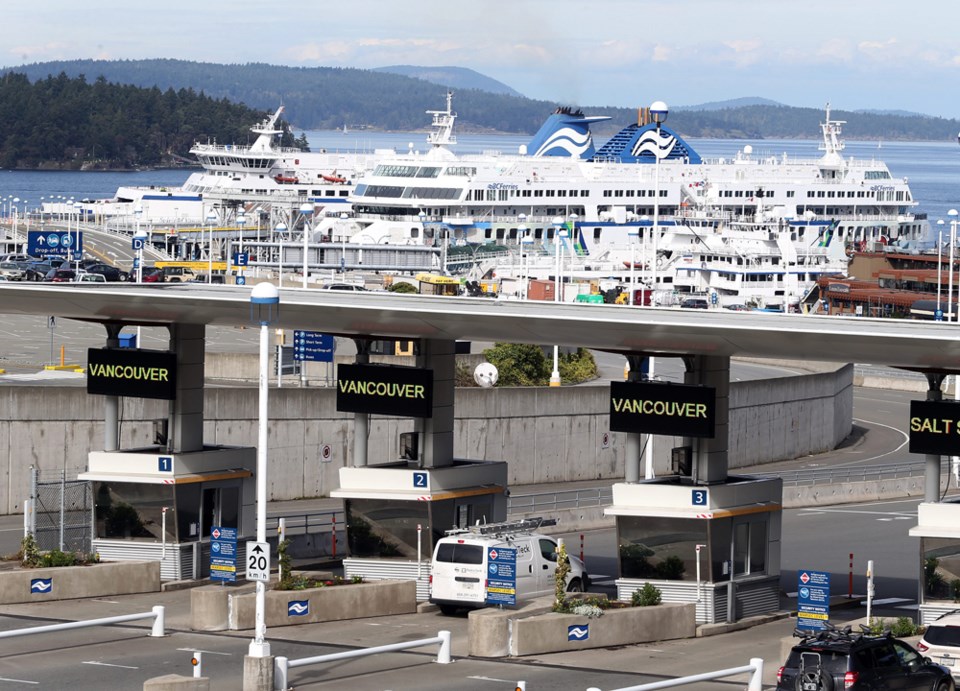B.C. Ferries is putting more vessels on its major routes to meet summer demand but service will remain below usual levels during what is typically the busiest time of year.
“As the province starts to open up, we believe we will see an increase in our traffic, so that is why we are gearing up,” Deborah Marshall, B.C. Ferries spokeswoman, said Monday.
The summer schedule, in place from July 1 to Sept. 7, adds about 120 sailings per week to the major routes. The current schedule includes about 260 trips each week between Vancouver Island and the mainland. Extra trips have been added this weekend ahead of Canada Day.
B.C. Ferries has a contract with the province to operate the ferry service and the planned summer schedule meets required service levels, Marshall said.
Ferry vehicle numbers are down by 50 per cent for major routes compared with a typical year. That is an improvement from April, when traffic dropped by 80 per cent.
When the summer schedule comes into effect, there will be three vessels operating daily between Swartz Bay and Tsawwassen. Normally there are four ferries on that route in the summer, Marshall said.
The Departure Bay-Horseshoe Bay route will be served by two ferries, down from the typical three ships in summer, she said. At Duke Point-Tsawwassen, summer service will continue with the usual two vessels, and one ferry will serve the Horseshoe Bay-Langdale route.
The new summer schedule is expected to exceed demand by an average of 20 per cent. But some sailings might still be full, so B.C. Ferries encourages passengers to make reservations and to consider riding at less-busy times.
B.C. Ferries is losing about $900,000 per day due to a drop in traffic. In a statement, it said it will take two to three years before traffic gets back to pre-pandemic levels.
Marshall said that’s due to a combination of closed borders, consumer confidence, and loss of income for people who would otherwise travel. However, if borders remain closed, that could prompt more people to travel with B.C. Ferries, she said.
Prime Minister Trudeau said Monday that there will be no quick opening of borders, as Canada does not want to risk a second wave of the virus.
The province announced late last week that it was stepping in to block B.C. Ferries’ plans to cut 11 sailings on minor routes. The $180,000 in provincial money will allow those sailings to continue for now.
Several measures are in place to help keep people safe from the virus on the ferries, including limiting numbers to 50 per cent passenger capacity. Passengers on trips longer than 30 minutes must wear a face covering if they can not maintain a distance of two metres from another person.
Limited food services have been reinstated, with the goal of seeing passengers taking food to their vehicles during the trip. Transport Canada is allowing passengers to sit in their vehicles during crossings.
To check on summer schedules, go to bcferries.com.



